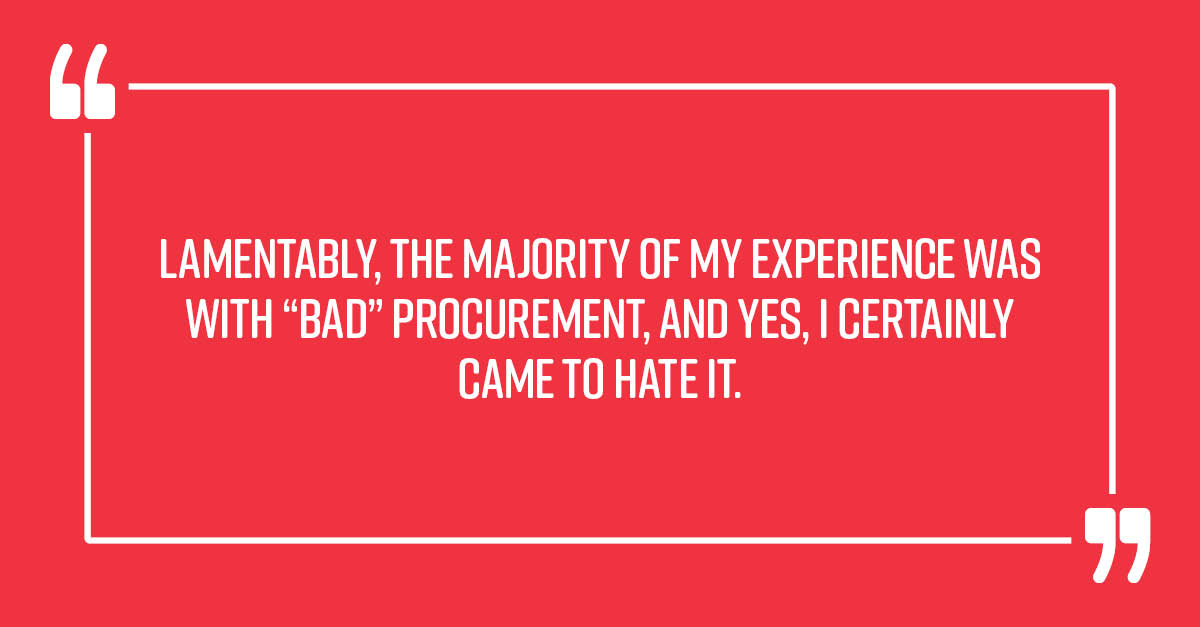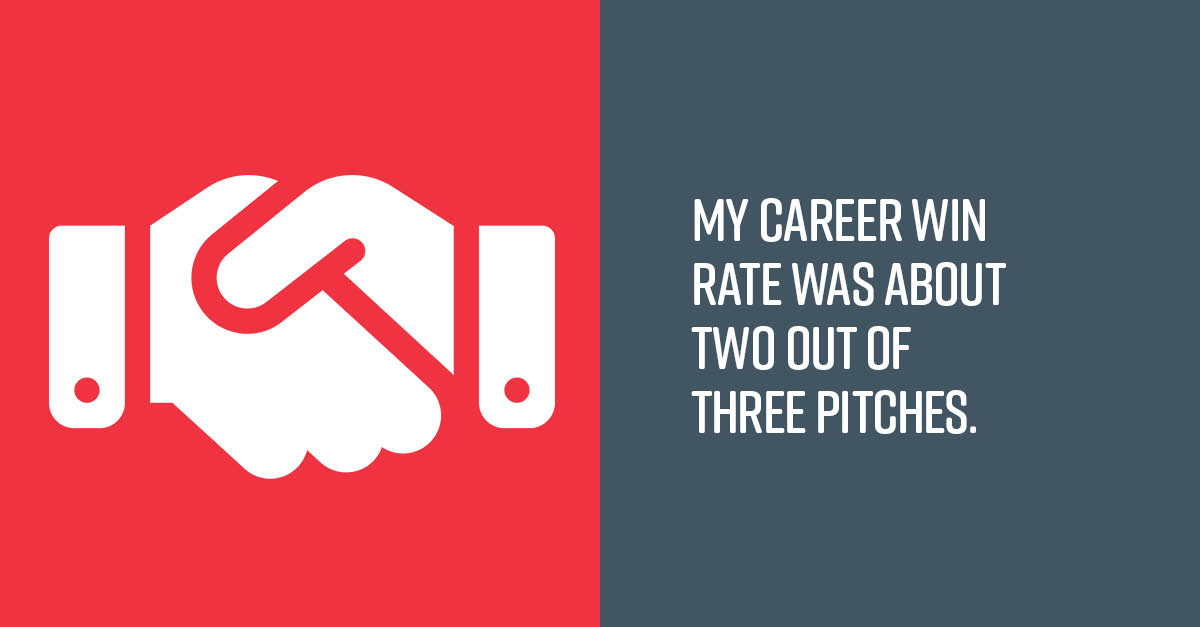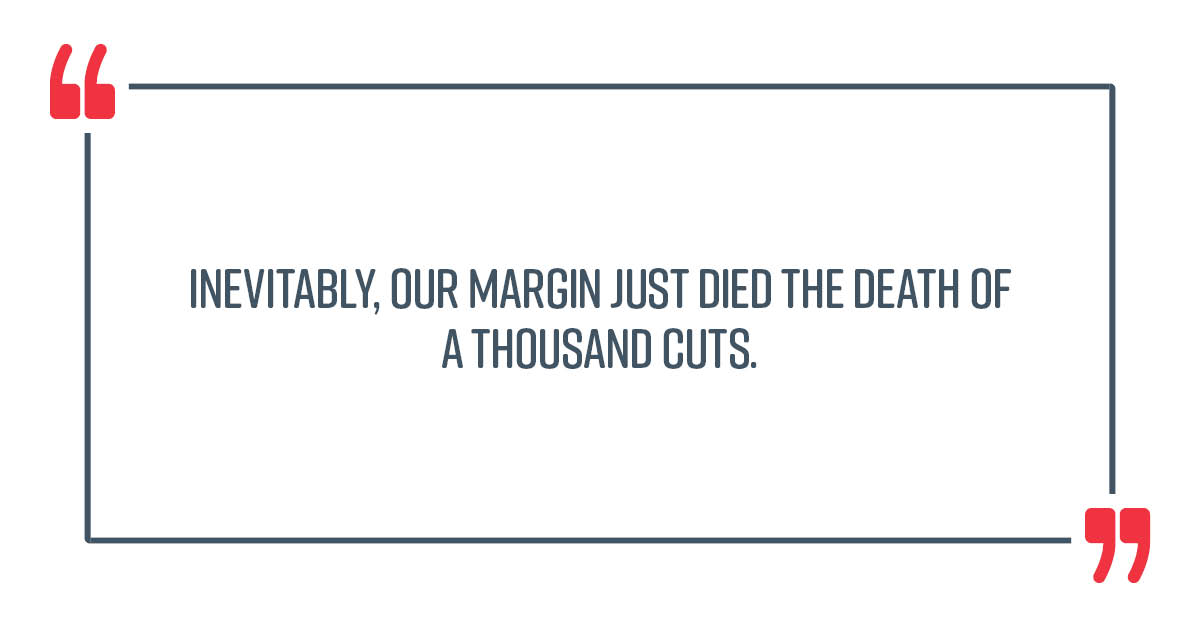Marcus Evans has been advising us for over ten years and is also a senior instructor on our Red Sheet® advanced negotiation course. Before this, he spent 30 years in advertising, running agencies for Ogilvy, BBDO and TBWA, where he spent a good proportion of his time selling to enterprise clients. He makes no secret of the fact that he has never enjoyed his negotiations and interactions with his client’s procurement teams, so we thought – as he has now “come over to the Dark Side” as he puts it – we’d take the opportunity to find out why.
Long Ago and Far Away
I think there are broadly two types of procurement. One that seeks to really understand what is being sourced and how the maximum value can be achieved for the buying organization (not just the lowest price). The other is what I would call “bad” procurement which works on little or no understanding of the supplier and just concentrates on achieving the greatest cost reduction with the most favourable payment terms, with no regard to the damage done to the relationship with the supplier.
Lamentably, the majority of my experience was with “bad” procurement, and yes, I certainly came to hate it.

Let me set the scene.
I spent 30 years in advertising, the last 20 of which, running agencies for Ogilvy, BBDO and TBWA, both in the UK and abroad. A major part of my role as an agency head was sales, or as we called it, New Business, in fact it was probably how I spent a good 50% of my time.
Why? Well, broadly speaking the average tenure of a Chief Marketing Officer (CMO) or Marketing Director is two years or less, and frequently a new incoming CMO will review (and probably replace) the company’s agency relationships. Changing agencies takes time, so as a broad rule of thumb a typical client lifespan could be around 3 years.
So, to maintain existing levels of business, an agency needs to replace around 30% of client revenue annually. Add to this a growth expectation of at least 20%, and each year an agency head has to generate 50% of the existing business to hit target. Hence, we were a new business machine.
The agency sales process invariably looked like this:
- Credentials presentation – presentation of our capabilities, philosophy, clients and experience, relevant case studies, what makes us different and most suited to handle your business, and why we really want to work with you. A short list of agencies are selected and invited to pitch.
- Pitch – the client supplies a detailed brief\RFP then the agency creates a team to work on the pitch. This was usually in the form of a formal pitch, showing understanding of the brand, the consumer, the market and proposing an overall strategy. This is then embodied in ideas and creative execution in a range of media, together with a team structure and supporting functions, with a media plan if required and detailed costs.
- Possible 3rd round – Sometimes there was a further round where an even shorter list of agencies either ran a strategic workshop or entered a creative shoot-out from a client brief.
- Negotiation Round 1 – The chosen agency would then be told they were initially selected and would come in to meet with the CMO/Marketing Director to discuss the terms of the appointment. Following this a contract would be sent by the client (or if we could negotiate it by the agency to the client).
- Negotiation Round 2 – Invariably we would then be invited to meet the procurement folks who would further negotiate the costs.
- Possible negotiation Round 3 – Sometimes there would be a meeting with the client’s legal team who would conduct a further level of negotiation of mainly cost and sometimes payment timing and other clauses.
- Large party – enough said.
The whole pitch process could take anything from two to four months and cost from £80k to £120k or more if it was an international pitch.
Relationship Building
During the pitch process we had two main objectives. The first was to learn as much about the client, their brand, their products, their processes, their consumers, and their competitors as possible. The second was to build relationships with as many of the client-side team as we could.
There is an old agency adage that you can win the business before the pitch. Now I don’t know whether I ever actually achieved this, but if I didn’t it was not for want of trying. We visited retailers and factories, met with research companies, media owners, ex senior managers, sometimes we even met with their current agency team members (where we had the right relationship). Frankly, we would have had a meeting with their security guard’s dog if it had some useful information.
We invested many, many man hours in building a relationship with as many of the client’s team, stakeholders, customers and influencers as we could. So, by the time the pitch date came around we had assimilated a huge level of knowledge and met (and shamelessly schmoozed) legions of useful folks.
Congratulations You’ve Won the Business!
I think my career win rate was about two out of three and given the cost of a pitch, we had to be very selective in the opportunities we would pitch for. When we won, the CMO/Marketing Director would make the call we were hoping for and we’d meet to discuss contracts, payment terms and start dates.

Discussions were cordial, as both parties were genuinely excited about the prospect of working together. Ideally, we would provide the client with our contract, though usually it was the other way round. Contracts would go to the respective legal teams, and it was about this time that we would be invited to meet with the procurement team.
Why I Hate (Bad) Procurement
Now, when I said that I hate “bad” procurement, I based this on my experience of negotiating contracts with client-side procurement functions who were solely focused on reducing cost. Given that a significant proportion of my remuneration was based on a performance bonus, on the whole, this was not hugely positive (in the sense that having your hand repeatedly slammed in a draw is not hugely positive).
Our relationship with the client-side team that owned the agency relationship was great – hell, by now the CMO was on the way to becoming my new best friend. We had a shared perspective of the brand, the consumer and mutual dislike of their inferior and unworthy competitors.
Prior to meeting with the procurement team, we would invite them to visit the agency so that we could share an abridged version of the pitch that won us the business, then walk them around the building to show them what we do. We hoped this would give them a better appreciation of what was involved and, more importantly, how we would add value.
Having declined our offer to visit our office or experience an abridged pitch presentation, we would meet with the procurement team at their office, where they would have two documents in front of them; the cost proposal from the pitch and the draft contract.
They would go through the cost proposal line by line and either ask for a brief description of what the cost related to and then suggest a cost reduction, or skip the description and go straight to chipping the price. They would then go through the contract and request an increase in the time between invoice and payment.
Now with this not being my first rodeo, there was some limited tolerance built into some elements of the costs, but the whole process was just an arm-wrestle to try and defend margin.
At no stage was there any discussion of added value. There was no offer of increased business in return for better terms. No carrot was dangled, there was no hint of an upside, just demand after demand for cost reduction without any understanding of how those costs were incurred. Neither was there acknowledgement of the effect that reducing costs could have on the quality of the service provided.
Inevitably, our margin just died the death of a thousand cuts.

But It Doesn’t Have to Be That Way
I dreaded the meeting with procurement. I always left with less than I arrived and there was never even a whiff of an upside. We were left with the feeling that there was no real understanding of what we did or what level of value we delivered to their business.
Once the procurement team had finished with us, we often went through a similar process with the legal team.
So how would I suggest this process could be improved?
Seek First to Understand
Firstly, invest a little time in understanding what your agency will deliver and how important it is to your business. The agency team may have spent hundreds of hours preparing the pitch and they are very proud of it – so if you don’t want the agency tour, at least spend half an hour and let them present it to you, then at least you’ll know what you are buying.
Inevitably there are more commoditized process driven elements of the agency service that are negotiable, but the unique talent that is part of the resource that can deliver game-changing value to the client’s business is not that price flexible.
The Magic of a Performance Incentive
Consider a stretch target for achievements that will deliver measurable incremental revenue to the business and build that into the agency fee structure. It will be a win-win outcome and completely self-funding. We all love an incentive and although the extra mile is generally expected these days, there may be yet further added value that could be unlocked by the right incentive.
After all, there is only so much extra effort that can be delivered, and a fair incentive can ensure your business is at the front of the queue.
Good Procurement Practice from a Sales Perspective
- Win-win is a good outcome – even if it’s win-win in your favour, it will motivate your agency. So, see how you can make cost or payment terms concessions an exchange rather than a margin raid.
- Invest a little time in understanding the value delivered by the agency. These folks work long hours and weekends to make a difference to your business, at least take a look at the creative work you are negotiating the price of.
- Think about devising a performance incentive based on measurable KPIs. You will do far better out of it than the agency will – and they love a challenge so will work even harder to achieve it.
How to Get the Best Service From Your Agency
- A little appreciation goes a long way. Thank them when they go the extra mile.
- See if you can do anything for them. A testimonial is very much appreciated (and they will be happy to write it for you). Providing some input to a case study is even better.
- Give good feedback on work, it will help them understand your needs even better.
- New business is the lifeblood of your agency – they will love you for an introduction that leads to more business.
- Pay them on time.
And Finally…
In a service business the quality of the output is a product of the talent of the team, the way they are managed, and the passion they have for the client. A smart client wants to be top of mind with the people that can add the most value.
The best way to achieve this is simply to make them like you. They will proactively come with great ideas. They will go the extra mile time and time again and they will work weekends and holidays to ensure you meet your deadlines. And you will always be able to rely on them when your back is against the wall.
I still hate bad procurement. However, where the procurement team took the trouble to understand the value we delivered and approached their negotiations accordingly, dealing with an informed procurement team who were aligned with the real needs of their business was most certainly a positive experience.

